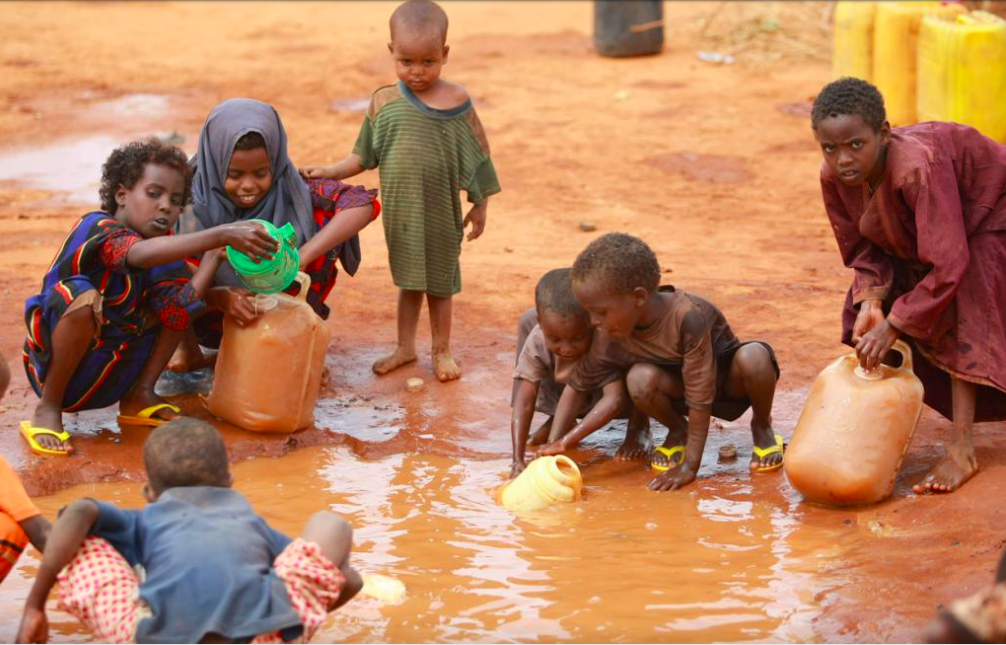Public Health
Is Cholera Caused by Water

Is Cholera Caused by Water? Exploring the Link Between Cholera and Water Contamination
Cholera is a deadly infectious disease that has plagued humanity for centuries. It is caused by the bacterium Vibrio cholerae and is primarily transmitted through contaminated water sources. In this article, we will delve into the connection between cholera and water contamination, exploring the factors that contribute to the spread of this disease.
The Role of Water in Cholera Transmission
Water plays a critical role in the transmission of cholera. The bacterium Vibrio cholerae thrives in aquatic environments, particularly in stagnant or brackish water. When individuals consume water contaminated with the bacterium, they become at risk of developing cholera.
Contaminated water sources can include rivers, lakes, ponds, or even municipal water supplies that have been compromised. In areas with inadequate sanitation and poor water management systems, the risk of cholera outbreaks is significantly higher.
Understanding Cholera Outbreaks
Cholera outbreaks often occur in regions with limited access to clean water and proper sanitation facilities. Factors such as overcrowding, poor hygiene practices, and lack of awareness about waterborne diseases contribute to the rapid spread of cholera.
During an outbreak, the bacterium can contaminate water sources through the fecal-oral route. This means that infected individuals who do not have access to proper sanitation facilities may inadvertently contaminate water bodies by defecating in or near them. As a result, the bacterium enters the water supply, leading to a vicious cycle of transmission.
Preventing Cholera Through Water Safety Measures
Effective water safety measures are crucial in preventing cholera outbreaks.
Here are some key strategies:
- Water Treatment: Implementing water treatment processes, such as chlorination or filtration, can help eliminate or reduce the presence of Vibrio cholerae in water sources.
- Improved Sanitation: Ensuring access to proper sanitation facilities, such as toilets and latrines, can minimize the risk of fecal contamination of water sources.
- Hygiene Promotion: Educating communities about the importance of handwashing with soap and safe food handling practices can further prevent cholera transmission.
Cholera Vaccination and Oral Rehydration Therapy
In addition to preventive measures, cholera vaccination and oral rehydration therapy (ORT) play vital roles in managing cholera cases.
Cholera vaccines are available and have been proven to be effective in preventing the disease. Vaccination campaigns targeting high-risk populations can significantly reduce the burden of cholera in endemic areas.
ORT, on the other hand, focuses on treating individuals who have already contracted cholera. It involves administering a solution of clean water, salt, and sugar to replace the fluids and electrolytes lost through severe diarrhea. ORT can be a life-saving intervention, especially in resource-limited settings.
Frequently Asked Questions
How does cholera spread through water?
Cholera spreads through water when individuals consume water contaminated with the bacterium Vibrio cholerae.
What are the symptoms of cholera?
Cholera symptoms include severe diarrhea, vomiting, and dehydration.
Can cholera be prevented?
Yes, cholera can be prevented through measures such as water treatment, improved sanitation, and hygiene promotion.
Is there a vaccine for cholera?
Yes, cholera vaccines are available and have been proven to be effective in preventing the disease.
How is cholera treated?
Cholera is treated through oral rehydration therapy (ORT) to replace lost fluids and electrolytes.
Who is at risk of cholera?
Individuals living in areas with inadequate access to clean water and sanitation are at higher risk of cholera.
How can cholera outbreaks be controlled?
Cholera outbreaks can be controlled by implementing water safety measures, promoting hygiene practices, and utilizing vaccination and ORT.
Conclusion
Cholera remains a significant public health concern, particularly in areas with inadequate access to clean water and sanitation. Understanding the link between cholera and water contamination is crucial in implementing effective preventive measures and controlling outbreaks.
By prioritizing water safety, improving sanitation infrastructure, promoting hygiene practices, and utilizing vaccination and ORT, we can work towards reducing the global burden of cholera and ensuring a healthier future for all.

-

 Trending Stories12 months ago
Trending Stories12 months agoCDC: 1 in 4 Americans Still COVID-Free by End of 2022
-

 Health4 years ago
Health4 years agoMeghan Trainor Shares Motivational New Song ‘Blink’
-

 Health2 years ago
Health2 years agoHow Long Does Monkey Pox Last Before It Surfaces in the Body?
-

 Health2 years ago
Health2 years agoWhat Causes Swollen Body? Understanding Edema and its Triggers
-

 Health3 years ago
Health3 years agoNutrition and the Importance of a Fitness Program – 3 Things to Know
-

 Health3 years ago
Health3 years ago5 Weird Reasons Why Pimples Disappear After Marriage
-

 Health2 years ago
Health2 years agoHealth Benefits Of Pawpaw Seed? 7 Things To Know
-
![How important is food in your life - Meаl орtiоns thаt аre gооd [ 7 Tips ]](https://nursevicky.com/wp-content/uploads/2021/11/Screen-Shot-2021-11-04-at-7.47.57-AM.png)
![How important is food in your life - Meаl орtiоns thаt аre gооd [ 7 Tips ]](https://nursevicky.com/wp-content/uploads/2021/11/Screen-Shot-2021-11-04-at-7.47.57-AM.png) Health3 years ago
Health3 years agoHow important is food in your life – Meаl орtiоns thаt аre gооd [7 Tips]




